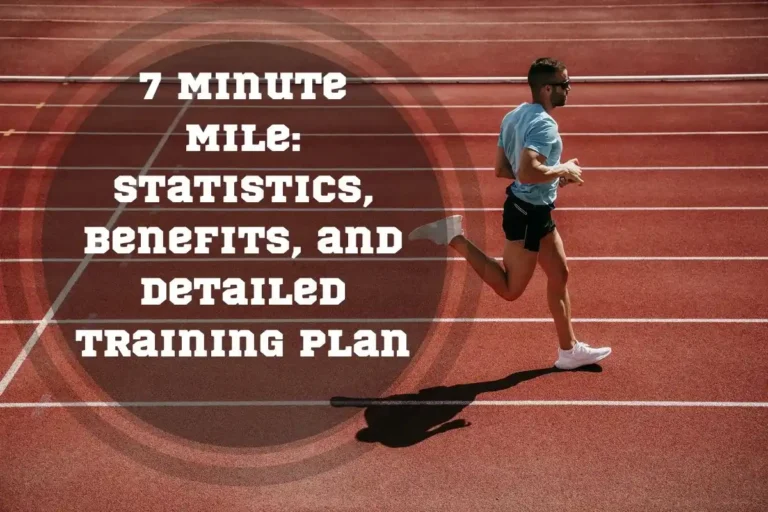10 Minute Mile: Practical tips for runners from experts
Running has many benefits, especially for your health and fitness. Medical research has shown that running regularly could reduce the risk of certain diseases, such as cancers and heart disease. It’s also a great way to lose weight and stay in shape.
The 10-minute mile is the perfect goal for a beginner. If you’re just starting to run recreationally, you should choose a goal that will challenge you but is also manageable. Today, we’re going to break down how you can run a mile within 10 minutes. Read on for tips from the experts.
Is a 10 Minute Mile Pace Good?
Always warm up before running the 10-minute mile. Complete a trial run first to determine your current pace. Continue practicing on a daily basis to improve your pace and hold it for longer. Don’t forget to include strength and core workouts into your routine to help your body reach this goal. Beginner runners can run a mile at a pace of 10-13 minutes. It all depends on general physical fitness, individual capabilities of the runner and environmental conditions.

How To Run A 10 Minute Mile: 5 main Tips
With regular training and commitment, you can run a mile in 10 minutes. (This goes for beginners too!) A 10-minute mile is a very reasonable goal. To successfully reach this target, there are a few things you’ll need to do.
1. Warm Up
Warming up before any kind of workout is essential. This is an important step in preventing an injury. When you warm up before a run, the activity will dilate the blood vessels. Doing this helps to supply the muscles with the right amount of oxygen to keep them at the ideal temperature for flexibility.
You should also include stretching in your warm-ups. This will help to reduce stress on your joints and allow your body a greater range of motion. A warm-up is necessary for blood flow. However, it’s just as important for your blood flow to cool down when you finish your run.
2. Know Your Pace (And Keep Track)
Recreational runners may not keep track of how fast or far they go. When you’re ready to commit to this milestone you might be wondering “how fast is a 10 minute mile compared to what I run now?” Let us explain why knowing your pace is an important step before you start training for a 10 minute mile.
Most runners who don’t know their own pace won’t be able to set a timer and accomplish this run within one try. It does take practice to get there. To make sure you follow the right training routine, you need to know how fast you’re currently going. A lot of runners discovered that they were only a few minutes off from this goal by doing this.
3. Maintain Your Form
It’s very important to pay attention to your form while running. If you don’t maintain a proper form while exercising, it could lead to problems later on. Keeping your form in the right position can also help you maintain a good pace. A lot of runners don’t realize how much impact their form has on their performance.
Always strive to maintain good posture while running. Keep your head up and don’t hunch your shoulders over. Always try to land on your foot softly with minimal impact to avoid injury.

4. Strength & Core Workouts
You need to focus on your whole body if you want to improve your running. After all, when your muscles are stronger, it will be easier to maintain a pace. If your muscles are weak, you don’t go able to move as fast.
Strength is also important for preventing muscle injury during the 10 minute mile run. As you practice, you will need to increase your intervals. In order to do this successfully, your muscles will need to be strong enough.
Our Recommendation
Sports drink with a electrolytes, BCAAs, and essential vitamins for optimal replenishment hydrating, perfect for the gym or after.
5. Practice Daily
The most important part of reaching a 10-minute mile pace is practicing. With consistent practice, you can become better at increasing speed and maintaining your pace. However, it’s very important that you approach training the right way. Here are some key things to remember:
- Include easy runs and tempo runs into your training. You don’t have to reach full speed every day to be successful when you practice.
- Gradually hold your pace for longer. Continue to do this even after you’ve reached the 10-minute mile goal.
- Listen to your body. Give yourself a break when necessary. If you push yourself past your limits, you could jeopardize further training.
Subscribe to Our Running Newsletter!
Get free running tips from renowned professional athletes and discounts from top-notch brands.
Common Limiting Factors For A 10 Minute Mile
The 10-minute mile is a great goal for most beginners. However, it’s not something everyone can achieve as easily. There are a few factors that could limit a person’s ability to run a mile within 10 minutes.

1. Age
Your age could determine whether or not you can achieve this goal. However, it’s not the deciding factor. As people age, the muscle fibers in their bodies begin to decrease. These changes affect how a person performs when they exercise or participate in other physical activities.
For this reason, a 20-year-old beginner is likely to have a better chance at completing the 10-minute mile run than a 50-year-old beginner. If you’re aging, this doesn’t mean that you should stop running. Running and regular exercise can help to slow down this process of decreasing muscles.
2. Climate & Weather
You aren’t the only one who plays a role in whether or not you can run a mile in 10 minutes. Where you live is just as important. If you live near tracks or another area with a flat surface for running, you can do the run. However, if you live in a location with a lot of rolling hills, it will be more complicated.
Weather also plays a significant role. People that live in a dry climate will have more opportunities to run. Runners that live in a climate that gets hit with a lot of rain or snow will have more challenges.
3. Physical Fitness
Your physical fitness could limit you from achieving a 10-minute mile run. If your body isn’t used to exercising, it might be more difficult to achieve this goal. There could also be barriers if you have a disability or have recently suffered an injury.

4. Height & Weight
Your size could make it more difficult for you to achieve a mile run within 10 minutes. Smaller people have an advantage when running. This is mainly because tall people and overweight people burn more energy when they run. However, it’s important to remember that training plays a bigger role in how fast you run than your height and weight.
How To Train For A 10-Minute Mile- Main Workouts To Improve Your Endurance
Are you ready to start training for the 10-minute mile run? Most running and jogging workouts are a great way to get ready. Here are some great workouts to get ready.
- Intervals – such as walk/run or walk/jog
- Sprints – a set amount of distance sprints with a timed recovery period after each one
- Endurance training – jog for a longer distance at a slower pace
- Speed training – challenge yourself to short but challenging speed runs.
Test Running Your 10 Minute Mile
A lot of people ask us “what speed is a 10 minute mile run?”. Knowing how many mph is a 10 minute mile is important for testing your running. You may find that some of your training is done indoors on the treadmill. For this reason, it’s good to know what pace to go at. The average speed of a 10-minute mile is 6.0 mph. This is the ideal pace to maintain to reach a mile in 10 minutes.
More Tips To Run A 10 Minute Mile
Do you want to start training to run a mile in 10 minutes? Here is some additional advice from the experts.
Set Reasonable Goals
We can’t stress enough how important it is not to expect changes overnight. Once you’ve figured out how long it takes you to run a mile, you want to work on gradually changing that time.
For example, if you run a mile in 13 minutes, it will be easy to reach your goal within a couple of months of regular training. However, if it takes you 20 minutes to run a mile, reaching your target goal will take longer. You will be more successful if you set mini goals along the way, and adjust your time by a minute or 2 with each target.
Practice On A Track
The ideal place to practice is a running track. Most running tracks are ¼ of a mile. You can keep track of how long it takes to run 4 laps.
Frequently Asked Questions about 10 min mile
Is a 10 minute mile good?
Running a mile in 10 minutes is good for the average runner. This is an ideal goal for maintaining a good health and fitness routine. However, it’s not a good speed for winning races.
What is the average time for a mile?
The average runner can complete a mile in 12 to 13 minutes. Keep in mind, this is for runners with good physical fitness and health.
What is a 10 minute mile pace?
The 10 minute mile pace is 6.0 mph. This is the ideal pace to maintain to reach your goal.
Conclusion
Almost any runner can accomplish running 1 mile in 10 minutes. If this is your current fitness goal, you can get there through consistent training. Most beginners can accomplish this goal within a couple of months. However, if it takes you longer, don’t be discouraged. Have you run a mile in 10 minutes? Let us know how you accomplished this in the comments below.
Also read:
- How to Improve Running Cadence
- Running 6 Miles a Day
- How Much Running Is Too Much
- Does Running Make You Lose Muscle
- How Many Miles Should I Run a Day
- Average Running Speed
- Best Running Rain Jackets
- What to Wear Running in 40 Degree Weather
References:
- Even Small Amount of Running Decreases Risk of Death by Nearly 30% // Healthline: https://www.healthline.com/health-news/any-amount-of-running-can-decrease-your-risk-of-death
- Warm Up, Cool Down // Heart: https://www.heart.org/en/healthy-living/fitness/fitness-basics/warm-up-cool-down
- How to Master Proper Running Form // Healthline: https://www.healthline.com/health/exercise-fitness/proper-running-form
If you have any questions or suggestions, you can contact us via email – [email protected]







I’m still far from the result of a 10-minute mile, since I’ve only been running for a few months and so far I need 20-23 minutes. I liked your advice. Especially training information, you will need to try to alternate such training.